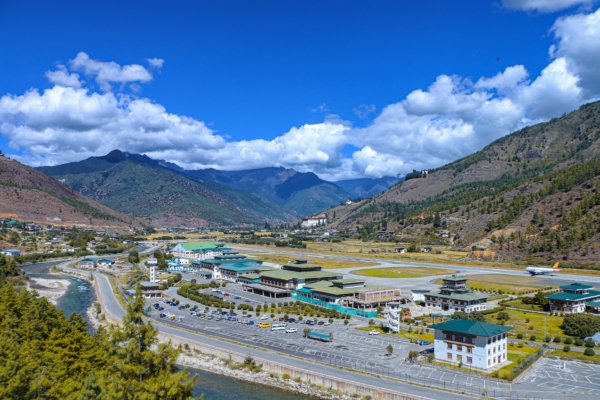For pilots, the most challenging part of flying an aircraft is often the landing process, especially in airports where there is no radar assistance and manual landings are required. In Bhutan, there is an airport known for its difficult landing conditions that demand exceptional flying skills, with only 50 pilots worldwide qualified to tackle the task.
According to a report by CNN, this airport is the Paro International Airport in Bhutan, recognized as one of the most technically demanding airports for pilots to navigate.
Pilots at Paro International Airport must take off and land in a unique manner, making it impossible for large aircraft to operate there. Specialized training is required for pilots to acquire the necessary flying skills, with only 50 pilots currently certified to do so.
Bhutan, a mysterious kingdom at the foot of the Himalayas known as the “Land of the Thunder Dragon,” adds an air of mystique to the high-altitude country with a population of approximately 800,000.
Paro International Airport is classified as a Category C airport, meaning pilots must undergo specific training to fly there and manually land without radar assistance. A slight miscalculation in landing could lead the aircraft onto someone’s rooftop.
The challenges of landing at this airport stem from several factors. Firstly, Bhutan’s high altitude landscape, with 97% of the country covered in mountains, including its capital Thimphu standing at an elevation of 7,710 feet (2,350 meters). While the airport’s altitude is slightly lower at 7,382 feet (2,250 meters).
Captain Chimi Dorji, who has served for 25 years at the state-owned Bhutanese airline Drukair, explained to CNN that pilots must master local techniques and knowledge to accomplish flying missions at the airport. They refer to this as area competence training.
He elaborated, “The higher the altitude, the thinner the air, so essentially, the aircraft flies faster in the air, although your true airspeed remains the same, it’s much faster compared to the ground speed.”
The second factor contributing to the airport’s difficulty is weather conditions. Pilots flying from major cities like New Delhi, Kathmandu, or Bangkok to Paro International Airport must depart early due to strong winds at the airport. Officials prefer all incoming flights to land before noon for safety reasons.
Captain Dorji mentioned that they try to avoid landing after noon as the strong midday heat causes rising thermals, making the terrain dry. Afternoons bring turbulent winds in the valley. Mornings are much calmer.
Takeoffs are less of an issue, which is why there are departing flights in the afternoon from the airport, allowing passengers to rest longer on their last night in Bhutan. However, due to the lack of radar assistance, there are no nighttime flights at the airport regardless of the season.
Additionally, Bhutan experiences monsoons from June to August with frequent heavy rainfall, with the possibility of hailstones as large as golf balls. Pilots encounter various weather patterns during this period.
Captain Dorji emphasized that part of pilot training is not just knowing how to fly but also when it’s unsafe to fly, making decisions to halt flights during hazardous conditions.
The final challenge is what Dorji calls “obstacles,” referring to the mountainous terrain surrounding the airport.
The runway at the airport is only 7,431 feet (2,265 meters) long, with high mountains on either side. Hence, pilots can only see the runway from the air just before landing, further increasing the difficulty of landing.
Dorji stated that landing at this airport poses a challenging test to a pilot’s skills, although it is not dangerous, “because if it was dangerous, I wouldn’t be flying.”

